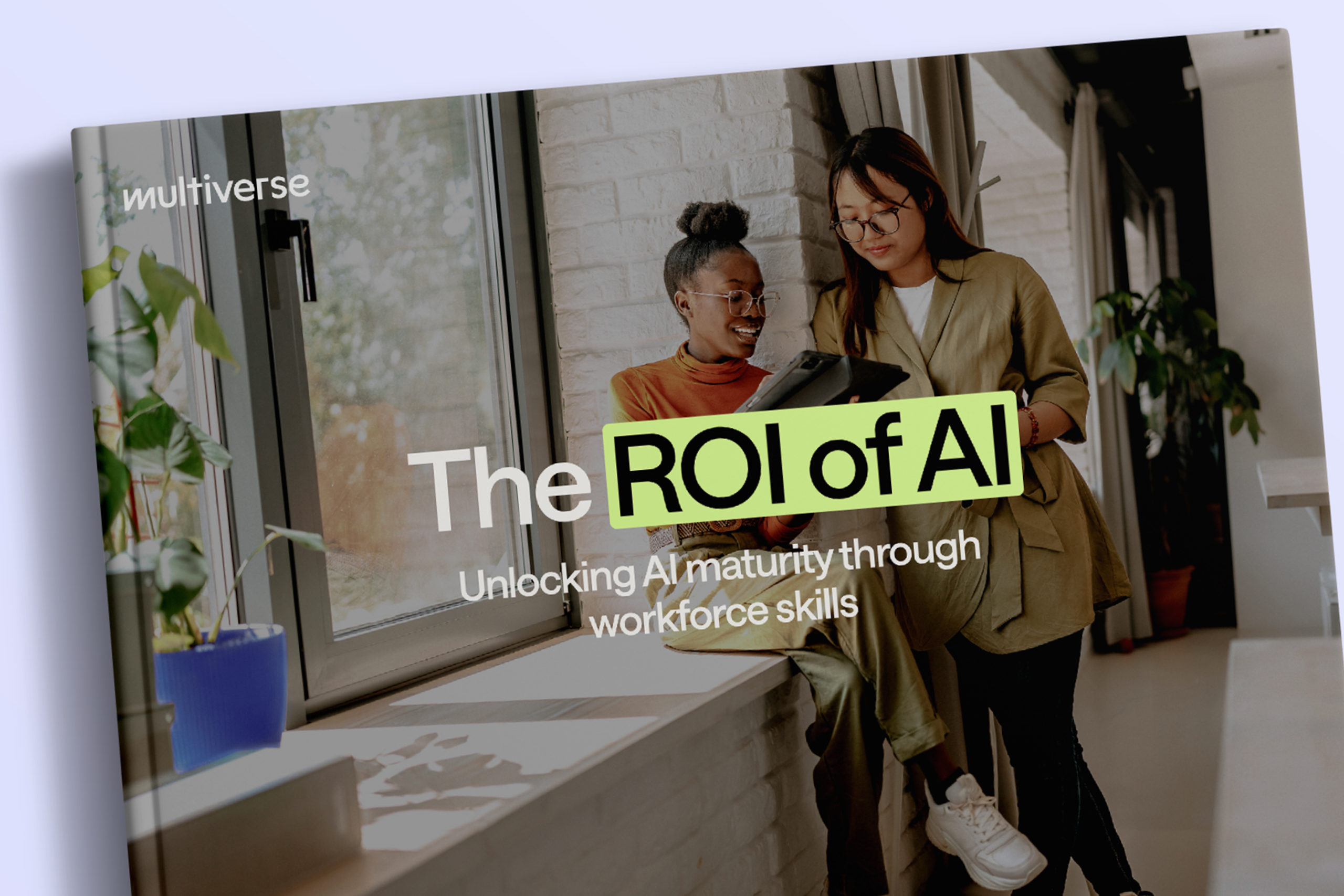Employee training budgets are set to grow, but HR leaders will be expected to show return on investment (ROI).
Skills are viewed as crucial to future business success. According to Multiverse research, more than two thirds (69%) of leaders believe their organisation will need different workforce skills to stay competitive by 2030.
It’s no surprise that businesses are upping their investment in learning as a result, with some 77% of leaders predicting their learning and development budget will increase by 2030.
Artificial intelligence (AI) is another driving force. As leaders push their organisations to adopt AI, workforce skills shortages are slowing progress – or even stopping AI initiatives in their tracks entirely. Tech leaders name skills gaps as a top blocker to AI implementation, with half of organisations planning to plug the skills gap with training as a result.
With these forces already in motion, HR leaders will face growing demand to show proof that employee training initiatives are delivering real business impact – and measurable ROI.
In this article, we will explore five simple steps for calculating the return on investment of employee training, helping you measure impact and make the case for future spending.
Understanding ROI in the context of employee training
ROI is a financial metric that measures the profitability of an investment by comparing the net gain or loss to its initial cost. A ROI calculation helps business and HR leaders evaluate the effectiveness and value of learning and development initiatives.
As well as validating the use of training time and budget, calculating ROI helps businesses to monitor the effectiveness of training programmes, and connect training with wider business goals.
Step 1: Set clear employee training objectives
Before launching any new employee training or upskilling initiative, clearly define what you want to achieve, and the metrics to measure success.
Wherever possible, align all learning programmes with strategic priorities and business outcomes. For example, an outcome could be: implementing an AI strategy, boosting productivity, or improving employee retention.
Next, assess the barriers that prevent you from achieving these aims, such as low employee satisfaction, low adoption rates for new AI tools, or high turnover rates for data specialists.
Then, agree on the metrics you will track to measure changes to these outcomes. Increasing productivity, for example, can be measured by looking at output per employee, the time saved on tasks, or quality improvements.
If addressing specific skills gaps, such as the AI example mentioned above, conducting pre- and post-training employee skill assessments can help you further benchmark and measure success.

The ROI of AI skills
Learn how to drive measurable results from AI by upskilling your teams
Step 2: Work out the costs of employee training
Tallying up your costs will come from two different sources. Firstly, direct costs include the payment for any training materials, an external trainer or supplier if you used one, and any venue or equipment charges.
Secondly, indirect costs come from the time employees spend away from their daily tasks to complete the training.
Step 3: Map the tangible and intangible benefits of employee training
Here, the benefits split into two categories:
- Tangible benefits include productivity gains, employee retention improvements, and any cost savings created by employees using their new skills from the training programme.
- Examples of intangible benefits are enhanced collaboration, improved confidence, and an increased potential for innovation – which can be measured through methods like employee surveys or testimonials. Keep these in mind for reporting back (see step five).
Step 4: Run your ROI calculation
When going through this exercise, consider how to balance any short-term costs with the long-term benefits. A typical ROI formula looks like this:
ROI = (Benefits of employee training, minus costs) divided by costs x 100
For the clearest ROI figure, include the metrics which can be quantified. Usually, this is monetary: it can be measured against both the inputs of time and cost, as well as the outputs, such as increases in revenue and productivity.
Step 5: Tell a story when reporting results
Now it’s time to communicate the impact. After running the ROI calculation, don’t forget about the intangible benefits you recognised: they form a crucial part of the story to tell.
Make sure your metrics and objectives line up with the business objectives, visualise your data to make it more digestible, and include qualitative data such as employee testimonials to add colour.
Be transparent about any challenges to help inform future plans. What did you learn, and what could change next time to improve ROI?
Case study example: Jaguar Land Rover
Let's look at how Jaguar Land Rover measured the impact of its upskilling efforts. The company had three objectives:
- Equip employees with the knowledge and skills needed to identify opportunities to reduce costs and increase revenue.
- Build a data-driven culture that knows how to apply and leverage data in various scenarios – with the goal of increasing productivity and efficiency across the business.
- Increase employee satisfaction and engagement by investing in skills development.
Jaguar Land Rover launched the Multiverse Data Fellowship programme to equip employees with the skills needed to become experts in data analysis, modelling and machine learning. Currently, there are 600 employees in the programme across every department.
After assessing the ROI of the employee training programme, JLR found that learners had:
- Identified new opportunities to increase efficiency
- Increased productivity
- Increased employee satisfaction
Read the full story here.
Linking ROI with the bigger picture
Calculating the ROI of employee training is not just a financial exercise – it's a powerful way of advocating for further training initiatives.
By showing the real benefits of past training, HR leaders can make a compelling case for additional investments in employee development – especially given today's urgent demand for workforce AI skills.
Get in touch about your skills transformation today.







